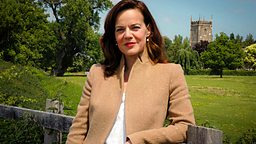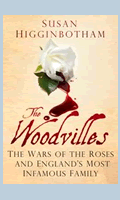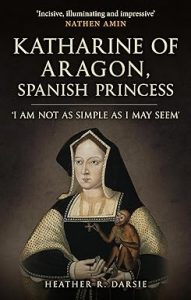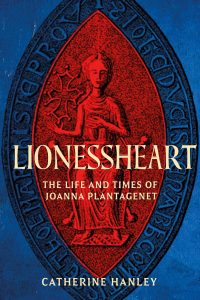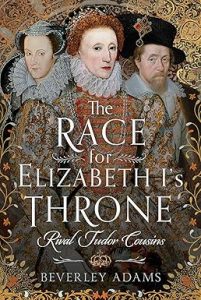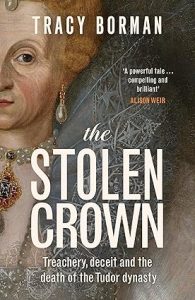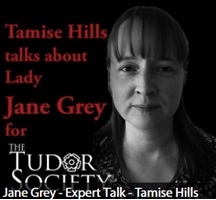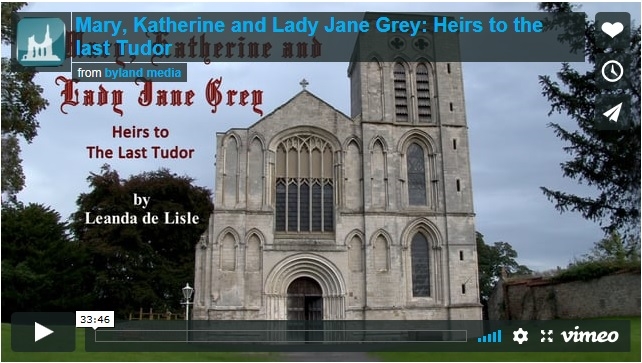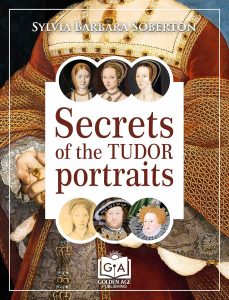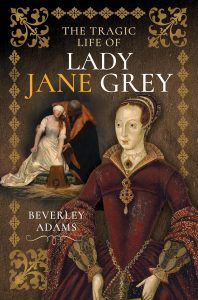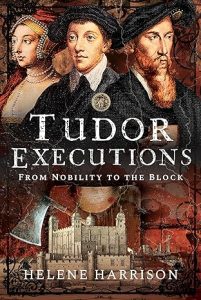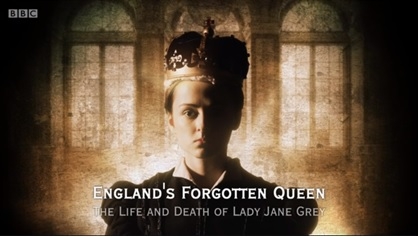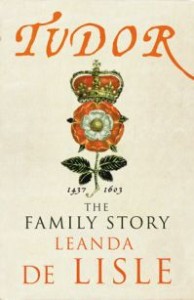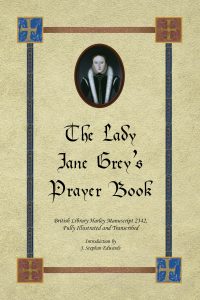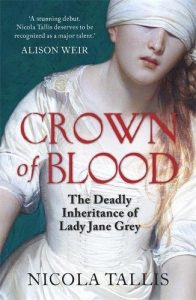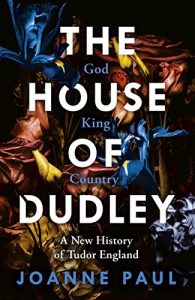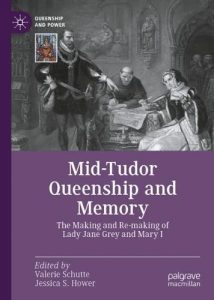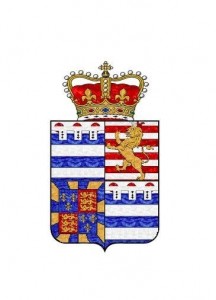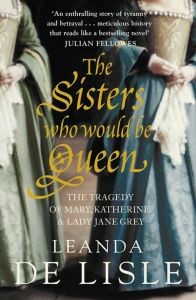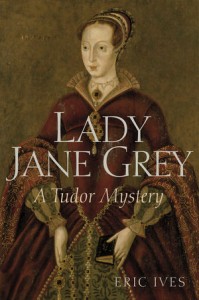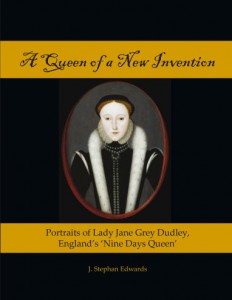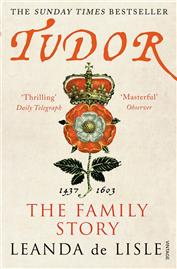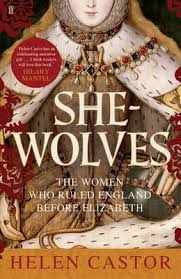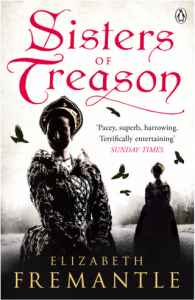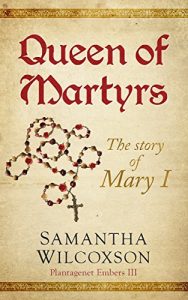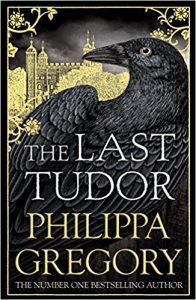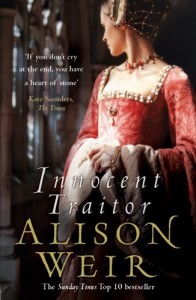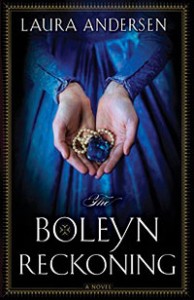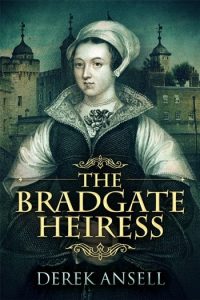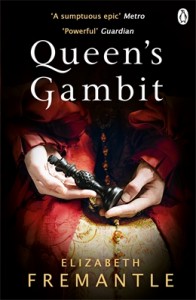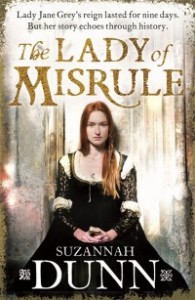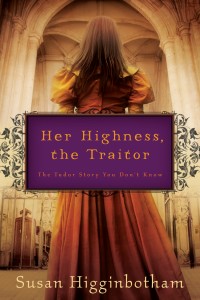I am delighted to welcome author Susan Higginbotham to the Lady Jane Grey Reference Guide.
Susan’s new book, which is published in the UK tomorrow (8th October), is ‘The Woodvilles: The Wars of the Roses and England’s Most Infamous Family.’
Thank you to Susan for her guest article about Thomas Grey.
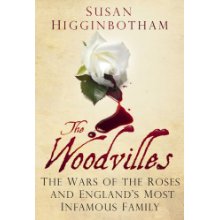
Lady Jane Grey descends in two lines from Elizabeth Woodville: one from her daughter Elizabeth, queen to Henry VII, and one from her son Thomas Grey. I’m happy to have been invited here to post about Thomas Grey, Marquis of Dorset, Jane’s great-grandfather.
Stepson to the King
Elizabeth Woodville’s first husband was Sir John Grey, the son of Edward Grey, Lord Ferrers of Groby, and his wife, Elizabeth. Depending on which postmortem inquisition one believes, Thomas Grey was born around either 1451 or 1455, but the latter date seems more probable, as jointure arrangements were being made for Elizabeth Woodville in January 1455, suggesting that she had married only recently.
Thomas’s father was killed in 1461 at the second Battle of St. Albans, leaving Elizabeth with two sons, Thomas and Richard. As Lady Ferrers of Groby had remarried, young Thomas’s inheritance was in some jeopardy, a situation Elizabeth Woodville sought to remedy in 1464 by agreeing with William, Lord Hastings that Thomas would marry one of Hastings’ as-yet-unborn daughters or nieces. As it turned out, however, Hastings’ assistance proved unnecessary, for that same year, Elizabeth attracted the interest of a far more powerful protector: Edward IV himself. Young Thomas suddenly found himself the stepson of the King of England.
Soon after Elizabeth Woodville’s royal marriage, her unmarried sisters each were provided with nobly born husbands, and Thomas Grey joined in the marital sweepstakes as well. His bride was Anne Holland, the only child of Edward IV’s sister Anne, Duchess of Exeter, and her estranged husband Henry Holland, Duke of Exeter.. Young Anne, a child like Thomas, had been slated to marry George Neville, a nephew of the powerful Richard Neville, Earl of Warwick, but Elizabeth Woodville preempted the Neville match by paying the Duchess of Exeter 4,000 marks for her daughter’s marriage. Thomas and Anne married in October 1466 at Greenwich. Unfortunately, the marriage was short-lived, as Anne Holland died by 1474.
According to the Tudor chronicler Edward Hall, in 1471, Thomas Grey got his first recorded taste of battle at Tewkesbury, when he along with William, Lord Hastings, led the rearguard. Hall also claims that Grey joined the Duke of Clarence, the Duke of Gloucester, and Hastings in murdering Henry VI’s seventeen-year-old son, Edward of Lancaster, after the battle. Earlier sources, however, suggest that Edward died either in the battle proper or the rout.
On August 14, 1471, Thomas was created Earl of Huntingdon. Before June 6, 1474, he married Cecily Bonville, the heiress to the Bonville and Harington estates. Cecily was also the stepdaughter of William, Lord Hastings, who sold Cecily’s marriage to Elizabeth Woodville for 2500 marks, a fee which was later satisfied when Edward IV cancelled a debt owed to him by Hastings. On April 18, 1475, Thomas was made a Knight of the Bath, as were his younger brother Richard Grey and his royal half brothers, Prince Edward and Richard, Duke of York. After dinner, Thomas was created Marquis of Dorset and dined in his robes. That same year, he took part in Edward IV’s anticlimactic expedition to France. In July 1476, Dorset participated in the ceremonial reburial of the king’s father. Throughout Edward’s reign, he served on royal commissions. Dorset became a Knight of the Garter in 1475 or early 1476.
In 1478, Dorset participated in the jousts following the marriage of his half-brother Richard, Duke of York. As Dorset made his entrance, his helmet was carried by Henry, Duke of Buckingham. Following Dorset were five coursers, their rich trappers “emramplished with A’s of gold curiously embroidered” and a void courser for the accomplishment of his arms. He had the unhappy duty in 1479 of attending the funeral of Edward IV’s youngest son, George. In 1480 he assisted at the christening of the youngest royal child, Bridget.
On September 16, 1480, Dorset was granted the wardship and marriage of the Duke of Clarence’s orphaned heir, Edward, Earl of Warwick. Although W. E. Hampton suggests that Dorset might have neglected his ward, thereby causing him to become feeble-minded, there is scant evidence that Warwick was feeble-minded and none at all that Dorset mistreated him. Equally unfounded is the allegation that Dorset locked up young Warwick in the Tower. Most likely Warwick lived on Dorset’s estates in the country. As Dorset had many daughters, Warwick was probably intended to marry one of them.
In 1482, Edward IV’s youngest brother, Richard, Duke of Gloucester, led an expedition into Scotland. Dorset served as one of his lieutenants, as did Elizabeth Woodville’s younger brother Edward. If there was any friction between Gloucester and these members of the Woodville family, it left no trace in the records.
Exile
The pivotal year of 1483 began on a high note for Dorset. Anthony Woodville, Earl Rivers, Dorset’s uncle, arranged in March 1483 for Dorset to take over his position as deputy constable of the Tower. It has been suggested that this was part of a scheme on the Woodvilles’ part to poison Edward IV and seize power, but this theory rests on rather shaky evidence. There seems to have been nothing secretive about Rivers’s and Dorset’s arrangements, which may have been simply been designed to augment the income of Dorset, who had a large family to support and to marry off. Dorset was indeed preoccupied at this time with arranging the marriage of his eldest son to Anne St. Leger, the daughter of Anne, Duchess of Exeter, by her second husband.
All these plans, of course, went for naught, for in April 1483, Edward IV died and was succeeded by his twelve-year-old son, Edward. At the time of the king’s death, three of the key players were absent: Edward V and his governor, Anthony Woodville, who were both at Ludlow Castle, and Richard, Duke of Gloucester, who was in the North. In their absence, the council debated the shape the minority government would take—without, according to Dominic Mancini, waiting for the arrival of Gloucester, who would surely have an opinion on the matter. Dorset is said to have brushed off his fellow councilors’ concerns with the contemptuous reply of, “We are so important, that even without the king’s uncle we can make and enforce these decisions.”
Dorset had an enemy on the king’s council: his stepfather-in-law, William, Lord Hastings. Mancini, an Italian who happened to be visiting England during the fateful spring and summer of 1483, claimed that Dorset and Hastings had a “deadly feud” based on the mistresses they had attempted to steal from each other. Hastings and Dorset’s uncle Anthony Woodville were also on bad terms. Hastings, therefore, hurried to make common cause with Gloucester against the Woodvilles. With the help of Henry Stafford, Duke of Buckingham, Gloucester seized Anthony Woodville and Dorset’s brother, Sir Richard Grey, as they were traveling with Edward V to London.
When Dorset and his mother heard the news, they tried to raise troops, according to Mancini, before Elizabeth fled into sanctuary. Dorset likely accompanied her there, although Gloucester himself believed that he was at large. Mancini also reported a rumor that Dorset, his mother, and his uncle Edward Woodville had made off with the royal treasury, but the evidence does not support the rumor. Gloucester was, however, seizing Woodville property, including that of Dorset: Simon Stallworth reported in June that “Where so ever can be found any goods of my lord Marquis is taken.” Elizabeth Shore, known to us as “Jane,” was arrested around this time, possibly in connection with Dorset, as she was alleged to be his mistress.
On June 13, Hastings attended a council meeting at the Tower, only to be seized and summarily executed on Gloucester’s orders. At about this time, Mancini reported, Gloucester learned that Dorset had left sanctuary, “and, supposing that he was hiding in the adjacent neighborhood, he surrounded with troops and dogs the already grown crops and the cultivated and woody places, and sought for him, after the manner of huntsmen, by a very close encirclement, but he was never found.” Soon afterward, Gloucester, having declared that Edward V, Richard, Duke of York, and their sisters were illegitimate, took the throne as Richard III. He first executed Anthony Woodville and Dorset’s brother Richard Grey.
As rumors began to circulate that the sons of Edward IV had been murdered, a rebellion against the new king broke out in the autumn of 1483 with the aim of putting an obscure exile, Henry Tudor, on the throne. Dorset emerged from hiding to join the rebellion. Richard III sent out a proclamation offering 1,000 marks in money or 100 marks in land for anyone who captured Dorset, whom he claimed “not fearing God, nor the peril of his soul, hath many maids, widows, and wives damnably and without shame devoured, deflowered, and defouled, holding the unshameful and mischievous woman called Shore’s Wife in adultery.”
The rebellion, including Dorset’s rising at Exeter, failed. Despite the price on his head, Dorset evaded capture and fled to Brittany, where he joined Henry Tudor in his exile. The Duke of Brittany granted Dorset and his men 400 livres a month.
In the spring of 1485, however, Dorset’s own mother, Elizabeth Woodville, who had agreed the previous year to release her daughters from sanctuary, sent a startling message to her son: she advised him to abandon Henry Tudor’s cause and return to Richard III’s England. Richard had executed Dorset’s uncle Anthony and his younger brother Richard; his royal half-brothers had disappeared, their fate still a mystery today. Dorset, therefore, had cause to be wary of this offer, sincere as it might have been. Nonetheless, “partly despairing for that cause of Earl Henry’s success, partly suborned by King Richard’s fair promises,” Dorset set off to England, to the dismay of his fellow exiles, who feared that he would reveal their secrets to King Richard. One fellow exile, Humphrey Cheney, tracked Dorset to Compiégne and urged him to abandon his plan to return home. Even though Dorset gave in to Cheney’s entreaties, his moment of weakness meant that he would never enjoy Henry Tudor’s trust again. When Henry invaded England later that year, he left Dorset behind as human collateral for money he had borrowed to finance his expedition.
Under Suspicion
The victorious Henry Tudor, now Henry VII, treated Dorset gingerly after the latter’s return to England. His attainder was reversed, but he was not summoned to Henry VII’s first Parliament, and he lost the grants and wardships he had acquired under Edward IV. He and his wife, however, assisted at the christening of Henry’s first child, Prince Arthur.
In 1487, though, Dorset found himself a prisoner in the Tower. A group of conspirators had latched upon a young boy, known as Lambert Simnel, whom they claimed was Edward, Earl of Warwick. The genuine Warwick, in fact, had been shut up in the Tower since the beginning of Henry’s reign, but Henry was taking no chances with Dorset, Warwick’s former guardian. As Francis Bacon wrote, “He sent the Earl of Oxford to meet [Dorset] and forthwith to carry him to the Tower; with a fair message nevertheless that he should bear that disgrace with patience, for that the King meant not his hurt, but only to preserve him from doing hurt either to the King’s service or to himself.” Even though the rebellion was soon put down, Dorset seems to have remained in the Tower until after the coronation of Henry’s queen, Dorset’s half-sister Elizabeth, in November 1487.
After his release, Dorset still remained under a cloud. On June 4, 1492, he was obliged to convey his lands to feoffees and to sign an indenture stating that if he committed treason or misprision of treason (concealment of treason), the feofees would hold the lands for the use of the king. He was also required to grant the king the wardship and marriage of his eldest son. A later indenture of 1496 was probably a less restrictive version of the 1492 arrangement.
On June 8, 1492, four days after Dorset entered into this indenture, his mother died at Bermondsey. Dorset and his wife both attended her funeral.
Last Years
Whether or not Henry’s suspicions of Dorset had been justified, Dorset behaved himself. He joined Henry VII on his expedition to France in the autumn of 1492 and helped suppress the Cornish insurrection in 1497. In 1495, he sat on the panel before which William Stanley was indicted for treason. Dorset continued to attend court: the king lost a pound to him in “playing at the butts” in 1495.
Dorset had a knack for spotting talent. Impressed by his three sons’ schoolmaster at Magdalen College at Oxford, Dorset invited the young man to spend Christmas with the family, then later presented him with the living of the Somerset rectory of Limington. It was not the last history would hear of Thomas Wolsey.
On September 20, 1501, Dorset died. In his will, dated August 30, 1501, he asked that he be buried at the collegiate church of Astley in Warwickshire. He requested prayers for the soul of his father, for his mother the queen, for Edward IV, for his wife (presumably his first wife, Anne Holland, as his second wife outlived him by many years), for his own soul, and for all Christian souls. Cecily, Marchioness of Dorset, who had borne her husband seven sons and eight daughters during their marriage, remarried but later requested burial beside Dorset at Astley. Dorset’s lands included Astley, Grafton, and Bradgate, the latter the manor most strongly associated with Lady Jane Grey.
Dorset may have also left an illegitimate daughter, Mary, referred to in the will of Elizabeth Neville, Lady Scrope of Masham, who gave “Mary, daughter in base unto Thomas Grey Marquess Dorset, my bed that the said Lord Marquess was wont to lie in, & all the parcel that belong thereto, & all the apparel of the same chamber.” While it is possible that the Thomas Grey referred to in the will, made in 1513-14, was Dorset’s son by the same name, the “was wont to lie in” language, harking back to bygone days, suggests that Dorset himself is the likelier candidate.
Conclusion
The Marquis of Dorset remains an elusive figure, whose willingness to abandon Henry’s cause to make his peace with Richard III has given him a perhaps exaggerated reputation for fickleness and disloyalty. He did, after all, have a family in England to tempt him back, as well as a bereaved mother. His sexual exploits, as described by Mancini and Richard III, also raise eyebrows, but there may well have been a propaganda element at work where the wilder claims are concerned. To his credit, Dorset seems to have borne his equivocal status during Henry VII’s reign with grace. Polydor Vergil, who had no obvious need to gild his reputation, called him “vir bonus et prudens.” One wonders what this early patron of Wolsey would have made of his learned great-granddaughter, Lady Jane.
You can buy Susan’s book at Amazon.co.uk
Follow Susan on Social Media:
Susan Higginbotham
History Refreshed
Facebook
@S_Higginbotham

